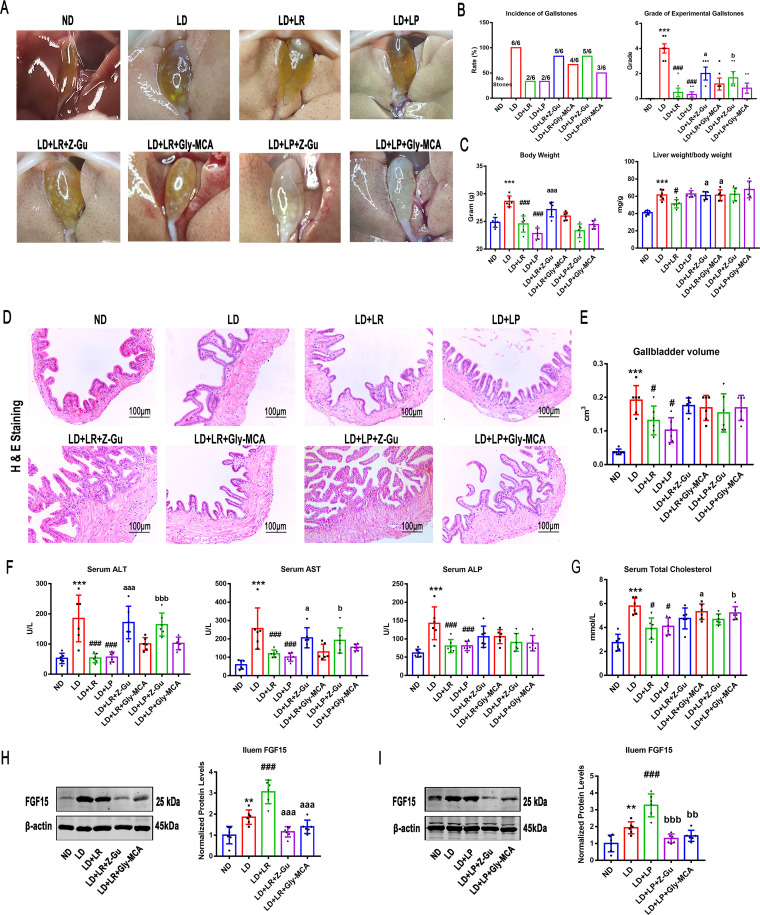FIG 6.
Inhibition of FXR activation attenuated the protective effects of L. reuteri (LR) and L. plantarum (LP) in LD-fed mice. Forty-eight mice were randomly assigned to 8 groups fed the ND or LD with or without L. reuteri or L. plantarum treatment (109 CFU/day). At the beginning of the L. reuteri or L. plantarum treatment, the mice were gavaged with (Z/E)-guggulsterone (Z-Gu), a global FXR inhibitor, or glycine-β-muricholic acid (Gly-MCA), an intestine-specific FXR inhibitor. (A) Gross appearance of gallbladders and gallstones of mice administered different treatments. (B) Percentage of gallstone incidence in each group of mice and grade of experimental CGS, based on visualized cholelithiasis. (C) Body weights of mice on the last day and ratios of liver weight to body weight. (D) Representative images of H&E-stained gallbladder sections (×200). (E) Gallbladder volumes estimated by the length, diameter, and circumference of the gallbladders. (F and G) Serum ALT, AST, ALP, and TC were determined by using a Siemens fast automatic biochemical analyzer (Advia 2400). (H and I) Protein expression and quantification of ileal FGF15 with or without L. reuteri (H) or L. plantarum (I) treatment. Data were analyzed by ANOVA along with the post hoc Tukey test and are presented as the mean values ± SEM (n = 6). *, 0.01 < P ≤ 0.05; **, 0.001 < P ≤ 0.01; ***, P ≤ 0.001 versus normal diet (ND) group; #, 0.01 < P ≤ 0.05; ##, 0.001 < P ≤ 0.01; ###, P ≤ 0.001 versus lithogenic diet (LD) group; a, 0.01 < P ≤ 0.05; aa, 0.001 < P ≤ 0.01; aaa, P ≤ 0.001 versus LD + L. reuteri; b, 0.01 < P ≤ 0.05; bb, 0.001 < P ≤ 0.01; bbb, P ≤ 0.001 versus LD + L. plantarum.

